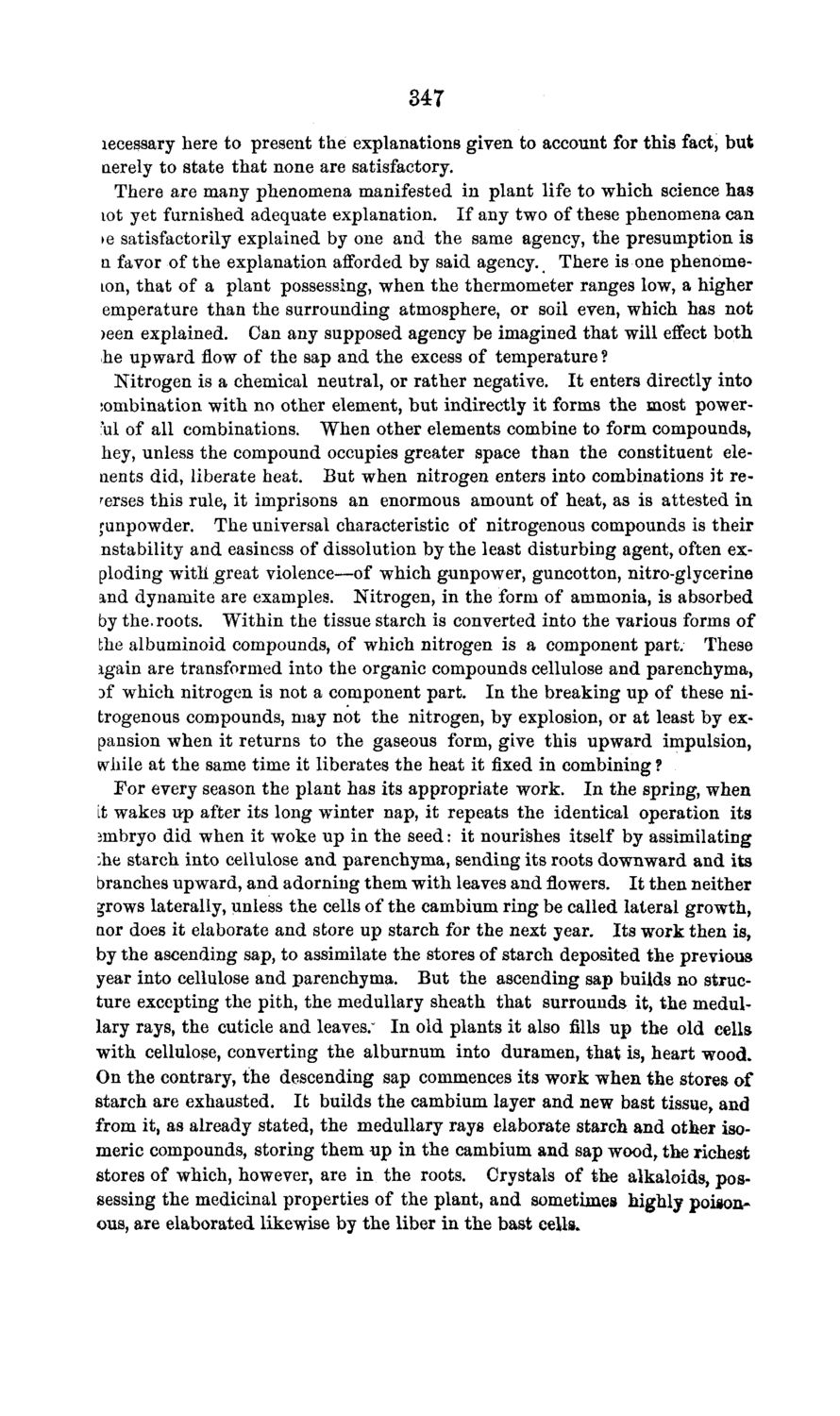| |
| |
Caption: Board of Trustees Minutes - 1869
This is a reduced-resolution page image for fast online browsing.

EXTRACTED TEXT FROM PAGE:
347 lecessary here to present the explanations given to account for this fact, but nerely to state that none are satisfactory. There are many phenomena manifested in plant life to which science has tot yet furnished adequate explanation. If any two of these phenomena can >e satisfactorily explained by one and the same agency, the presumption is n favor of the explanation afforded by said agency. There is one phenomeLon, that of a plant possessing, when the thermometer ranges low, a higher emperature than the surrounding atmosphere, or soil even, which has not >een explained. Can any supposed agency be imagined that will effect both he upward flow of the sap and the excess of temperature ? Nitrogen is a chemical neutral, or rather negative. It enters directly into jombination with no other element, but indirectly it forms the most powerful of all combinations. When other elements combine to form compounds, hey, unless the compound occupies greater space than the constituent elenents did, liberate heat. But when nitrogen enters into combinations it reverses this rule, it imprisons an enormous amount of heat, as is attested in gunpowder. The universal characteristic of nitrogenous compounds is their nstability and easiness of dissolution by the least disturbing agent, often exploding with great violence—of which gunpower, guncotton, nitro-glycerine and dynamite are examples. Nitrogen, in the form of ammonia, is absorbed by the.roots. Within the tissue starch is converted into the various forms of the albuminoid compounds, of which nitrogen is a component part. These igain are transformed into the organic compounds cellulose and parenchyma, 3f which nitrogen is not a component part. In the breaking up of these nitrogenous compounds, may not the nitrogen, by explosion, or at least by expansion when it returns to the gaseous form, give this upward impulsion, while at the same time it liberates the heat it fixed in combining ? For every season the plant has its appropriate work. In the spring, when it wakes up after its long winter nap, it repeats the identical operation its iinbryo did when it woke up in the seed: it nourishes itself by assimilating :he starch into cellulose and parenchyma, sending its roots downward and its branches upward, and adorning them with leaves and flowers. It then neither grows laterally, unless the cells of the cambium ring be called lateral growth, nor does it elaborate and store up starch for the next year. Its work then is, by the ascending sap, to assimilate the stores of starch deposited the previous year into cellulose and parenchyma. But the ascending sap builds no structure excepting the pith, the medullary sheath that surrounds it, the medullary rays, the cuticle and leaves/ In old plants it also fills up the old cells with cellulose, converting the alburnum into duramen, that is, heart wood. On the contrary, the descending sap commences its work when the stores of starch are exhausted. It builds the cambium layer and new bast tissue, and from it, as already stated, the medullary rays elaborate starch and other isomeric compounds, storing them up in the cambium and sap wood, the richest stores of which, however, are in the roots. Crystals of the alkaloids, possessing the medicinal properties of the plant, and sometimes highly poisonous, are elaborated likewise by the liber in the bast cells.
| |